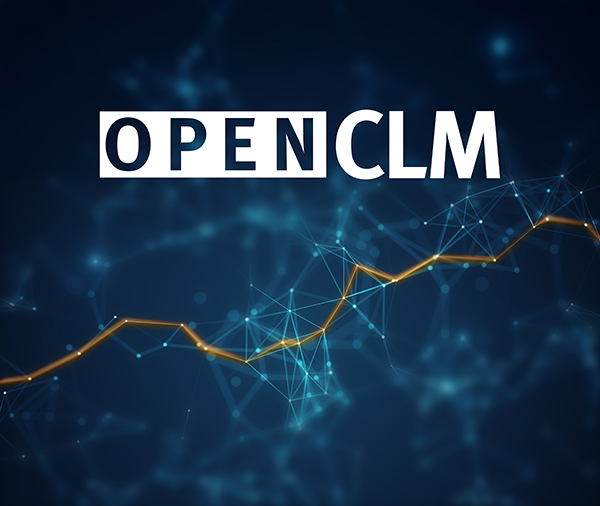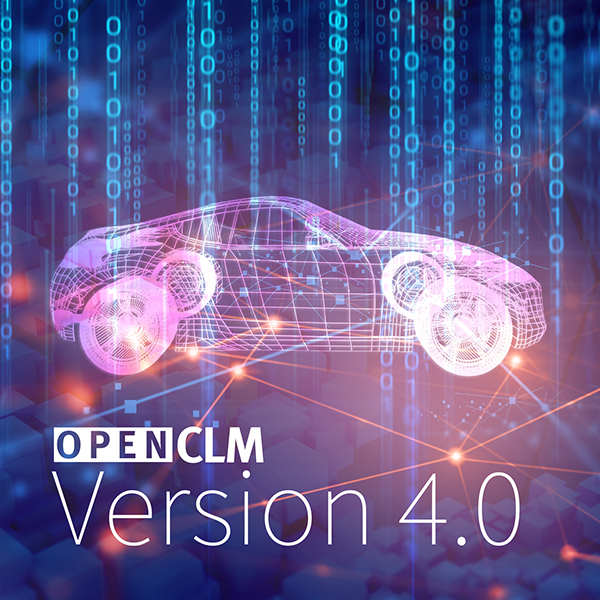
|
Global Change Management for efficient Product DevelopmentBy Johannes Lützenberger Getting to grips with changes poses a major challenge when it comes to developing complex, software-intensive products. Companies therefore need a cross-domain global change management system that ensures transparency across the boundaries of different departments and systems when changes are made. The digital thread solution OpenCLM makes it possible for them to link their processes and IT systems in a transparent manner. 
Complexity can quickly spiral when changes have to be made to products – especially in the case of mechatronic systems, as changes usually impact multiple specialist departments and are therefore an interdisciplinary issue. This makes a change management system that coordinates, synchronizes and brings together the disciplines and domains involved digitally all the more important. And this is exactly where the concept of global change management comes into play. Changes occur for a wide variety of different reasons: new legal requirements, changes in market requirements, new scientific findings or feedback from customers. First of all, the system engineers develop alternative approaches for meeting the requirements. Once a suitable approach has been selected, a corresponding change request is made. Implementation of the change request involves different specialist departments such as systems engineering, mechanics, electrics/electronics (E/E), software, etc. The challenge lies not only in the technical implementation but also in the coordination across disciplinary and domain boundaries, as each domain uses its own processes and tools. Information is often exchanged manually via Excel lists, e-mails, meetings or chat messages. This leads to media discontinuities, conflicting versions and decisions that are not transparent. Dependencies between partial changes often remain invisible, which makes managing the overall process difficult. 
Our digital thread solution provides companies with a tool that structures and links these processes and makes them digitally traceable. OpenCLM maps what is referred to as the "digital change thread", i.e. a digital thread that runs through the entire change process. All the relevant information is merged in a central change cockpit, where it is contextualized, linked and displayed. This provides engineers and project managers with a transparent overview of the progress being made with changes, their dependencies and the artifacts involved in the respective IT systems. A particular advantage of the solution is its ability to orchestrate changes across different domains. This means that different change processes from the mechanics, software or electronics departments can be brought together and integrated in a consistent overall process. The current maturity level of a change is aggregated, which makes the stage of each domain involved clear at all times. In the current release 4.0, a low-code environment ensures that workflows can be configured easily and individually. This means that companies can use it to map their own process models, define quality gates and set up automated processes. Seamless documentation of all the process steps, including iterations, ensures a high level of traceability and facilitates reliable quality assurance. 
Of particular importance is the fact that the workflows are based on industry-specific specifications, such as the standard defined by the German Association of the Automotive Industry (VDA) or the global process model A-SPICE (Automotive SPICE). These standards define clear requirements pertaining to change processes, for example with regard to traceability, quality assurance and documentation. OpenCLM makes it possible to create an audit-proof change management system in line with regulatory requirements. Transparent process management, automated release workflows and the rule-based creation of baselines make this possible. The creation of baselines can also be automated: They can be generated automatically at specific points in time, status values or process steps based on defined rules. This means that development statuses can be precisely recorded and reconstructed reliably at a later point in time – an important aspect in the context of audits or safety-critical projects. In product development environments that are increasingly interconnected, the ability to manage changes in a controlled and comprehensive manner is becoming a key capability. Global change management is more than just a technical tool – it is a strategic principle for breaking down silos, creating transparency and reliably interlinking teams. Solutions like OpenCLM provide the digital infrastructure needed to make these processes efficient, traceable and compliant with industry standards. This gives companies a clear competitive advantage. |
|
| © PROSTEP AG | ALL RIGHTS RESERVED | IMPRINT | PRIVACY STATEMENT | YOU CAN UNSUBSCRIBE TO THE NEWSLETTER HERE. |

